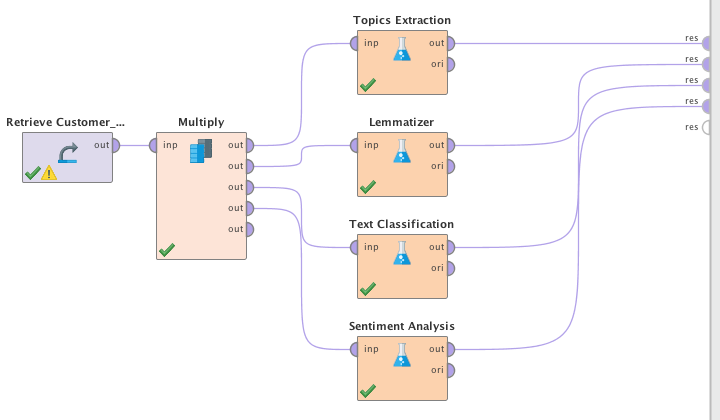Combine predictive analytics and text mining
Easily integrate MeaningCloud's text mining into the most widespread predictive analytics platform.
RapidMiner is an open-source data science platform, recognized as a leader in the field of advanced analytics tools. RapidMiner enables you to prepare data, create predictive models, validate them, and embed them into business processes quickly and easily.
The MeaningCloud extension for Rapidminer allows you to integrate the most accurate text analytics into your RapidMiner pipelines, thereby combining data and content analysis, with the added benefit of being fully customizable to your domain.
Features
The extension for RapidMiner features a set of operators that give access to some of MeaningCloud's most frequently used features and lets you customize MeaningCloud's functions to your domain to achieve maximum accuracy.
- Topic Extraction: extracts names of people, organizations, brands or places, abstract concepts, and amounts from the text.
- Text Classification: categorizes a text according to predefined taxonomies, which include IPTC and IAB out of the box.
- Sentiment Analysis: detects the positive/negative/neutral polarity expressed in the text.
- Lemmatization: extracts a list of the lemmas of the words found in the text.
- Customization: possibility of using personal dictionaries and classification or sentiment models created with MeaningCloud's customization tools.
Benefits
RapidMiner users are provided with the most effective text analytics, thanks to the wide range of analytic functions and powerful customization capabilities, which guarantee the highest accuracy.
MeaningCloud users are provided with the most advanced tools for combining unstructured analytics with structured and multisource data in sophisticated predictive models.


